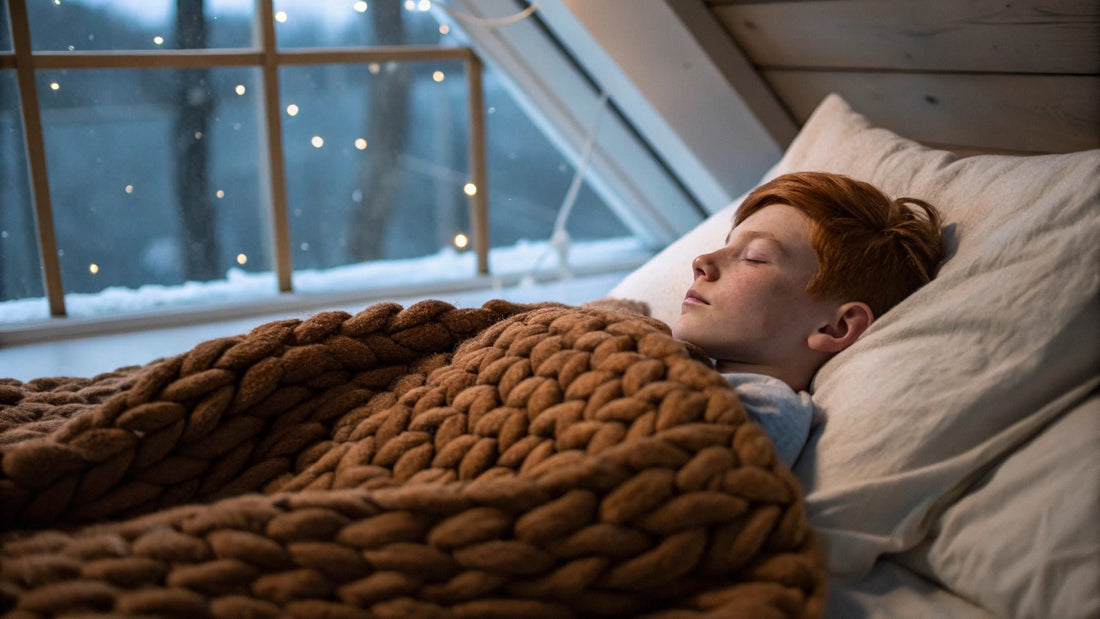
Signs Your Child Might Benefit From a Weighted Blanket
Watching your child struggle with bedtime anxiety, resistance, or restlessness can be exhausting—for both of you. A weighted blanket might be just the gentle, sensory support they need.
Quick answer: Many children can benefit from the deep pressure and comforting weight of a weighted blanket. Look for behavioral and sensory clues—like bedtime resistance, fidgeting, or comfort-seeking behaviors—that signal it could help.
Common Signs a Weighted Blanket Could Help
1. They Resist Bedtime or Take Forever to Fall Asleep
If your child dreads bedtime, drags out their routine, or takes forever to settle, a warm and grounded deep-pressure sensation may help them feel safe enough to drift off.
2. They Toss, Turn, or Doesn't Stay Still at Night
Frequent movement, restlessness, or “wiggling” during sleep can indicate difficulty calming their nervous system. Weighted blankets can help anchor restlessness.
3. They Cling to Heavy Layers or Hugs
If your child prefers to sleep under multiple blankets, loves tight snuggles, or gravitates toward dense textures, they may be seeking sensory comfort—a need a weighted blanket can meet naturally.
4. They Have Sensory Processing or Emotional Regulation Challenges
Children with ADHD, autism, or sensory sensitivities often benefit from calming, proprioceptive input. A weighted blanket can act like a gentle hug to settle their system.
5. They Get Upset Easily or Seem Overwhelmed
Emotional or sensory overload shows up in meltdowns or difficulty connecting with transitions. The steady pressure from a weighted blanket can reduce that stress response.
When a Weighted Blanket Might Not Be the Best Fit
-
Highly tactile-sensitive children may find the feeling overwhelming or uncomfortable—sharp textures or too much pressure might do more harm than good.
-
Children under 2 years old should not use weighted blankets due to safety concerns.
-
If your child dislikes being wrapped or cuddled, and retreats from touch, a weighted blanket may not appeal to them.
Final Thoughts: Trust the Signs
Weighted blankets aren’t a magic fix—but if your child shows behavioral or sensory signs of needing grounding, they can offer real, comforting support. Pay attention to their cues, introduce the blanket thoughtfully, and make it part of a calm bedtime routine.
FAQ
How much should a child’s weighted blanket weigh?
Roughly 10% of their body weight—choose slightly lighter if unsure.
Are weighted blankets safe for all children?
They’re generally safe if the child can easily move the blanket. Not recommended under age 2.
What if my child seems uncomfortable under it?
Stop using it—weighted blankets should feel comforting, not restrictive or overwhelming.



